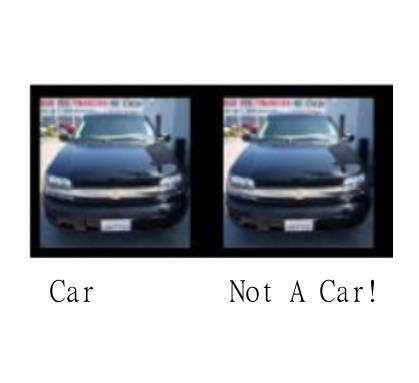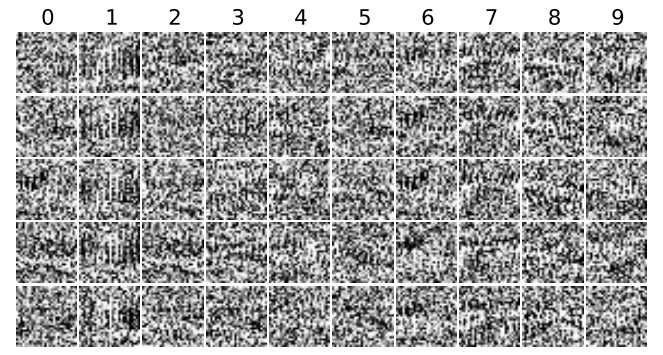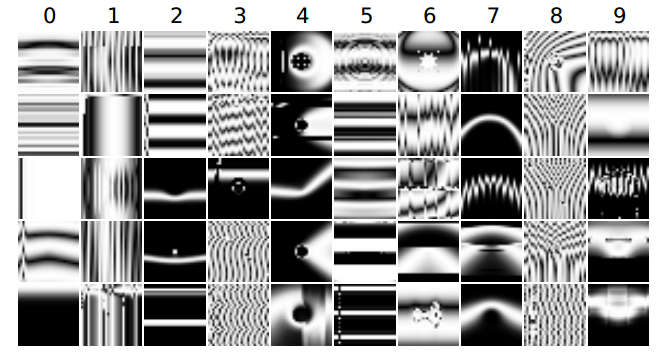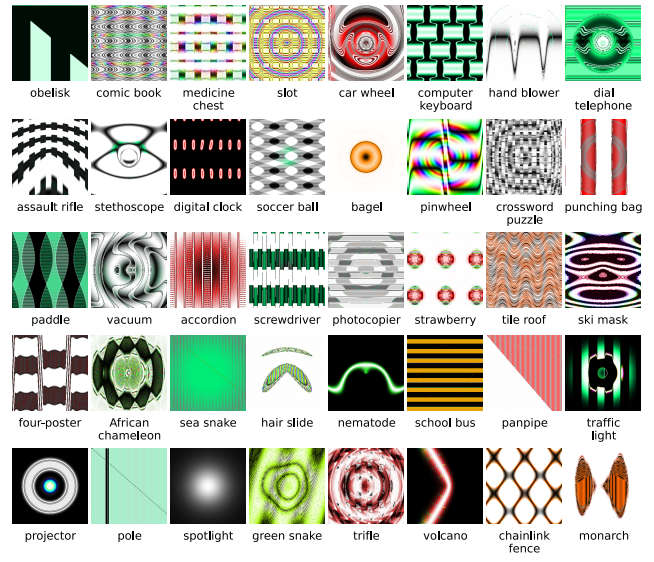| The Deep Flaw In All Neural Networks |
| Written by Mike James | |||
| Wednesday, 10 December 2014 | |||
|
Recently a paper reported the information that neural networks seem to have a fundamental problem in recognizing things now we have another twist on the same basic idea. In this case you can construct an image that looks nothing like what it is supposed to be and yet it is still classified with high confidence. The paper "Intriguing properties of neural networks" from a team that includes authors from Google's deep learning research project that we reported on in May (see The Flaw Lurking In Every Deep Neural Net) discovered something surprising and disturbing. If you have a Deep Neural Network DNN that is trained to correctly recognize photos of different things then close to any correctly classified image there is an image that is incorrectly classified. For example if you have a photo of a car and the DNN classifies it with a high probability as a car then it is possible to find a set of small perturbations to the image that don't change how it looks to a human but which cause the DNN to classify it as something else - even though to a human there is possibly no detectable change in the image.
Put simply - very close to any correctly classified image there is an incorrectly classified image, an adversarial image, that to a human looks very little different. Notice that this isn't a theorem, just an observation based on a practical examination of a relatively small number of DNNs. Even so, the fact that these DNNs exhibit the effect and the adversarial images seem to be incorrectly classified by other DNNs suggest that there is something deep and universal going on. The changes are small and distributed across all the pixels and yet they move the "data point" outside of the boundary that separates all cars from other types of things. In the original paper these adversarial images were found by an optimization algorithm that applied perturbations that moved the image away from its correct class. Now we have a new demonstration of this effect. In this case Anh Nguyen, Jason Yosinski and Jeff Clune made use of the genetic algorithm to "breed" images that were correctly classified with a high probability or confidence and yet, to a human, looked nothing like the the object they were supposed to be.
Indeed the images that the DNN classified so confidently were more like white noise to a human. for example the diagram below shows "digit" images that are classified with a 99.99% confidence by the DNN LeNet:
A slight tweak of the algorithm can generate more regular looking images that are classified as digits with a 99.99% certainty but still look nothing like the digits according to most humans:
The same technique was then applied to the Imagenet database with similar results the following were recognized with a mean confidence of 99.12% :
In this case you can occasionally see that there is some similarity in features - the nematode, spotlight and pole for example. However it seems that what is happening is that the images are stimulating the low level feature detectors, but not in an organized way. If a localized image stimulates the DNN then an image that includes repeated copies increases the total stimulation. To test this, some of the images that include repeats were edited to reduce the repeats and the confidence did drop. The genetic algorithm approach isn't essential in constructing such examples. The team also used a standard optimization method to produce images that were mostly unrecognizable, but still classified with a high confidence. All this suggests that the DNNs are learning low and medium level features and not making use of how these relate to one another. For example, a face would be recognized if it had two eyes, nose and mouth irrespective of where they occurred in the image. It also seems that there is a generalization - images bred to be classified with high confidence on one DNN seem to be classified with a high confidence by another. So what is going on? The authors suggest that it is problem with the way that the discrimination is being performed. The DNN assigns each class a large volume in the image space and confidence is proportional to how far away from the boundary an image is - how close it is to other images in the class isn't taken into account. There is so much available space that it is possible to find images that are in the class but are far from images that look like the class. This sounds very much like the arguments that resulted in the invention of the Support Vector Machine. Perhaps DNNs need to optimize something other than pure classification performance? At the end of the paper the authors raise the interesting question of how these finding affect the use of DNNs in real applications. A security camera, for example, could be fooled by "white noise" designed to be classified as a face. Perhaps the right background wallpaper could influence visual search classifiers. The possibilities are there waiting to be exploited. The idea that a driverless car could swerve dangerously to avoid something that looked nothing at all like a pedestrian is currently very possible - either by accident or design.
More InformationDeep Neural Networks are Easily Fooled: High Confidence Predictions for Unrecognizable Images
Related ArticlesThe Flaw Lurking In Every Deep Neural Net Neural Networks Describe What They See Neural Turing Machines Learn Their Algorithms Google's Deep Learning AI Knows Where You Live And Can Crack CAPTCHA Google Uses AI to Find Where You Live Deep Learning Researchers To Work For Google Google Explains How AI Photo Search Works Google Has Another Machine Vision Breakthrough?
To be informed about new articles on I Programmer, install the I Programmer Toolbar, subscribe to the RSS feed, follow us on, Twitter, Facebook, Google+ or Linkedin, or sign up for our weekly newsletter.
Comments
or email your comment to: comments@i-programmer.info
|
|||
| Last Updated ( Wednesday, 10 December 2014 ) |






